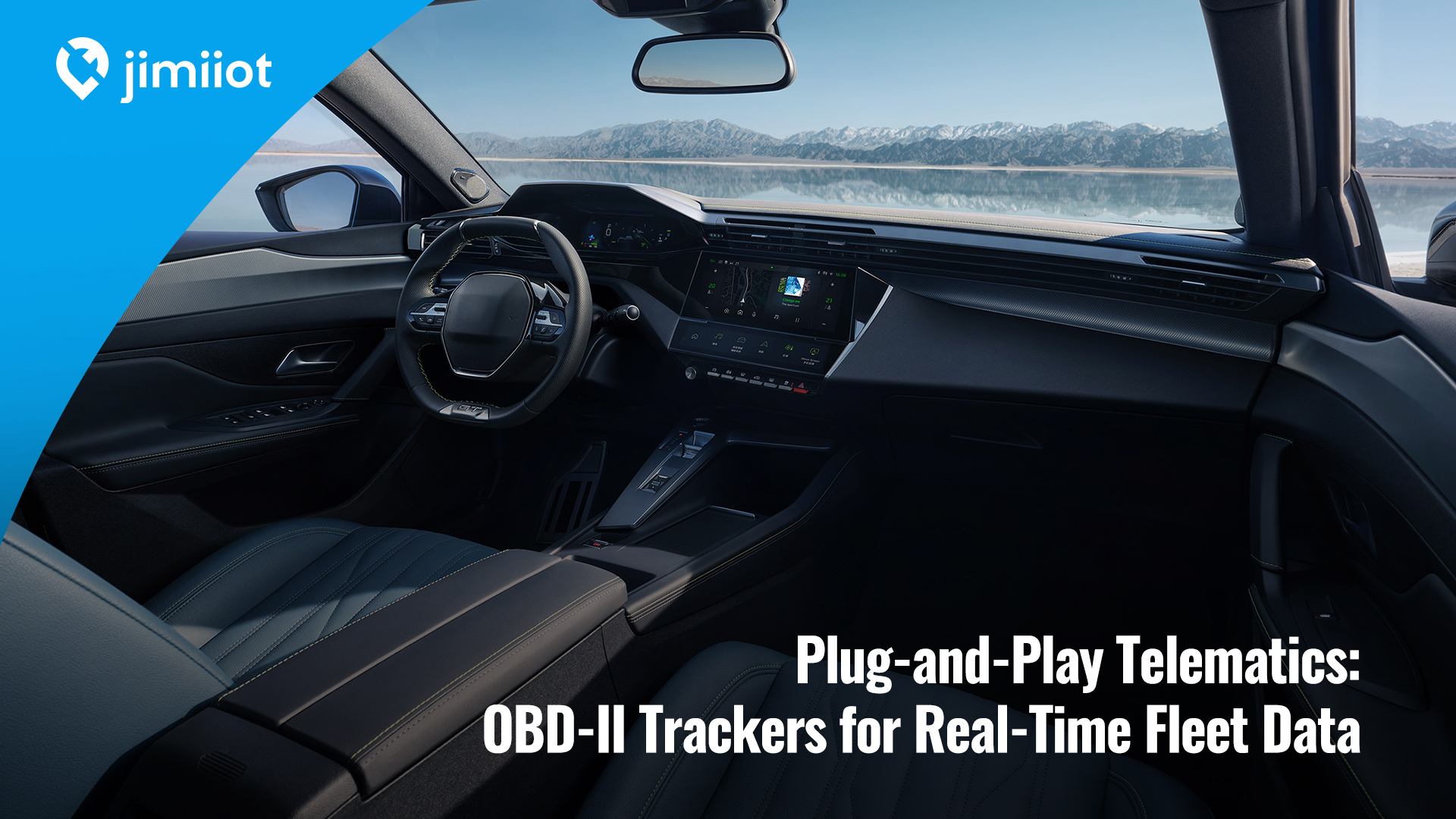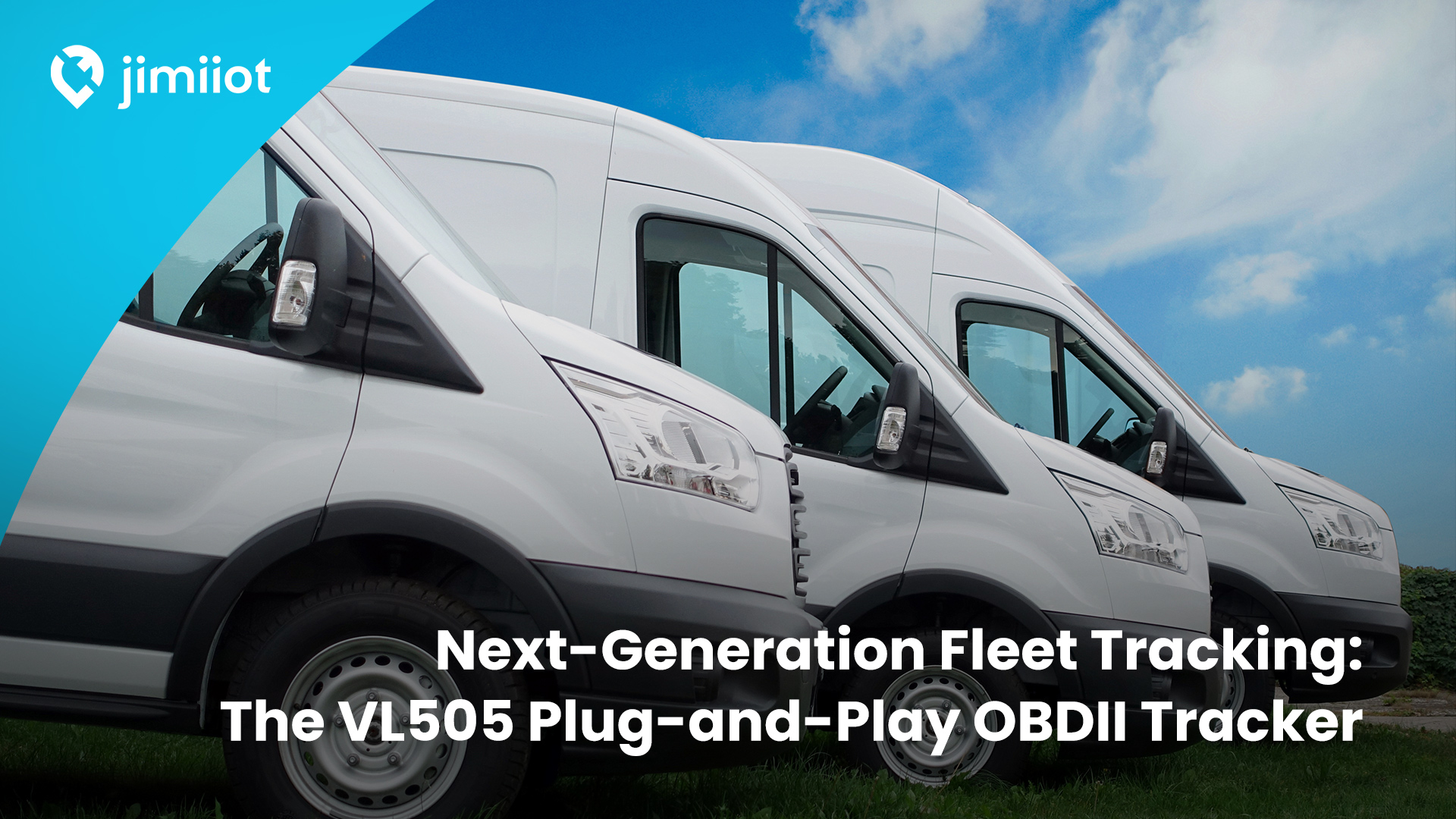
OBD-II fleet tracker are revolutionizing vehicle telematics by offering real-time data access through plug-and-play connectivity. These compact devices plug directly into a vehicle’s standardized OBD-II diagnostics port and stream GPS, engine performance, and diagnostic data to fleet managers or insurers. This approach provides continuous insights into speed, fuel usage, vehicle location, and fault codes — all with minimal installation effort. As a result, OBD-II fleet trackers are becoming the preferred solution for companies seeking efficiency, visibility, and simplified deployment.
How OBD-II Tracking Works
An OBD-II tracker plugs into the vehicle’s OBD port, tapping directly into the Engine Control Unit (ECU) and power supply. The device reads CAN-bus signals (engine RPM, fuel level, error codes, etc.) and pairs them with GNSS location fixes. It then sends this data over a wireless network (usually 4G LTE) to cloud software, giving managers live visibility into each vehicle’s status. Virtually every car or truck built after 1996 has a standard OBD-II socket, so these trackers are compatible with almost all vehicles. In effect, an OBD-II tracker acts as an intelligent gateway: merging GPS tracking with deep vehicle diagnostics. It reports not just position but also fuel consumption and trouble codes, all streamed in near real time for analysis and alerts.
Advantages of OBD-II Trackers
OBD-II trackers deliver several key benefits over traditional hardwired units:
- Plug-and-play installation: These devices plug straight into the car’s diagnostics port – no splicing wires or special tools required. This “covert” approach dramatically reduces installation time and cost. Hardwired trackers typically require professional wiring, whereas OBD units can be installed in seconds by anyone.
- Cost efficiency: Because no labor-intensive installation is needed, deploying OBD trackers across a fleet is far cheaper. Companies save on technician fees and vehicle downtime. In one analysis, experts note that OBD plug-in trackers “save you money on installation and reduce downtime” compared to hardwired alternatives.
- Rich vehicle data: Tapping into the ECU bus unlocks more information than GPS alone. OBD-II trackers can capture engine diagnostics, fuel usage, and maintenance alerts in addition to location and speed. This extra data helps fleets diagnose issues early and schedule preventative service.
- Real-time connectivity: Modern OBD devices include 4G LTE modems (typically LTE Cat-1) for seamless live reporting. Managers receive instant alerts on engine faults, harsh driving or geofence breaches as soon as they occur.
- Discreet operation: Many OBD trackers are extremely compact and sit flush in the port, making them hard to spot. For example, Jimiiot’s VL505 is only 1.7 cm tall when plugged in. In practice, these “covert” devices are hidden under the dash and difficult for drivers or thieves to notice.
- Versatility and power: Drawing power from the vehicle’s OBD port means no batteries to change or recharge. Trackers operate whenever the vehicle is on. They can also be moved between vehicles if needed, which is ideal for rental or short-term fleets.
Together, these advantages make plug-in OBD-II fleet tracker “affordable, convenient, and accessible” solutions for fleets. Fleets gain richer data streams with lower installation overhead, accelerating ROI on telematics.
OBD-II vs. Hardwired Trackers
Traditional hardwired GPS trackers are installed behind the dashboard and wired into the vehicle’s electrical system. While a concealed hardwired unit is tamper-resistant, it has drawbacks for many users:
- Installation: Hardwired trackers require drilling or splicing into power and ignition wires. Professional installation is usually needed, adding labor cost and vehicle downtime. In contrast, OBD-II units avoid this hassle – fleets can “simply plug [them] into your diagnostics system” and save on installation.
- Transferability: Once hardwired, a tracker stays with that vehicle. Moving it is time-consuming. OBD-II devices can be quickly unplugged and reused, ideal for rentals or temporary assignments.
- Data & features: Some hardwired units can capture extra signals (e.g. PTO usage or driver IDs) that OBD cannot. However, for most fleets the standard diagnostics data from OBD-II (engine faults, fuel level, etc.) is sufficient.
- Security: A hidden hardwired tracker is hard to find, which can prevent tampering. OBD trackers are tucked under the dash and mostly out of sight, but technically can be unplugged by a determined person. Many modern OBD devices mitigate this with anti-tamper alerts and ultra-compact profiles.
In practice, the plug-and-play ease and flexibility of OBD-II fleet trackers often outweigh the modest security advantages of a hardwired install. For most fleet and insurance applications, rapid deployment and low cost make OBD-II the preferred choice.
Applications in Fleet Management and Insurance
OBD-II telematics are widely used in both fleet management and usage-based insurance (UBI) programs. Fleet operators use this data to optimize operations: real-time location, fuel consumption and engine status reports enable smarter routing, reduced idling, and proactive maintenance. For example, telematics systems can alert managers to harsh driving or engine problems before they lead to breakdowns, helping fleets reduce operating costs and improve safety. Studies show that capturing real-time vehicle data “helps reduce costs, improve maintenance and keep [operations] running smoothly”.
In usage-based insurance, telematics allows premiums to reflect actual driving behavior. Insurers now offer policies where devices or apps monitor driving. UBI “collect[s] real-time data on driving behavior, including … speed, acceleration, braking patterns, and distance travelled”. Many insurers provide plug-in OBD-II units to policyholders. These OBD trackers transmit detailed performance data (vehicle usage, speed events, miles driven) so that safe drivers can earn lower premiums while riskier drivers are flagged for alerts.
Key industry use cases include:
- Fleet Telematics: Continuous GPS and diagnostic tracking helps companies optimize routing, reduce fuel use and enforce safety policies.
- Usage-Based Insurance (UBI): OBD-II fleet tracker feed insurers the driving telemetry needed for pay-as-you-drive (PAYD) and pay-how-you-drive (PHYD) programs.
Spotlight: Jimiiot’s Ultra-Compact VL505 OBD-II Tracker
Jimiiot’s new VL505 is a next-generation 4G LTE OBD-II GNSS tracker designed for both private cars and commercial fleets. It features an ultra-compact, plug-and-play form factor – only 1.7 cm tall when plugged in – making it almost flush with the port. Despite its size, the VL505 offers robust functionality. Its LTE Cat-1 modem ensures uninterrupted real-time data streaming, and multi-constellation positioning (GPS, BeiDou, AGPS and LBS) delivers sub-2.5 m accuracy. Installation is effortless through the OBD-II socket, providing reliable power without extra wiring.
Once installed, the VL505 OBD-II fleet tracker continuously monitors vehicle status. It supports “Driving Behavior Analysis” alerts that detect harsh acceleration, harsh braking, harsh cornering or collisions. It also sends instant event notifications for atypical conditions such as speeding, unexpected vibration, power disconnection or geo-fence entry/exit. All data and alerts are available via Jimiiot’s cloud platforms (like Tracksolid) for live tracking and reporting. According to Jimiiot, the VL505 is specifically aimed at “fleet management” and “Usage-Based Insurance (UBI)” scenarios, where its discreet design and feature set meet the needs of privacy-conscious fleets and telematics-driven insurers.
In sum, the VL505 OBD-II fleet tracker exemplifies the trend toward compact, plug-in vehicle trackers. By leveraging the standardized OBD-II port and modern 4G GNSS technology, devices like this deliver real-time vehicle intelligence with minimal fuss. For fleet operators and insurers, that means richer data, lower costs and simpler rollout – a powerful combination in today’s data-driven transportation market.
Why JimiIoT
JimiIoT is a global leader in innovative IoT solutions. We provide cutting-edge hardware and software tailored to enhance efficiency and connectivity. Our range of products includes advanced GPS tracking devices, asset management solutions, smart vehicle dashcams, and telematics platforms. With a focus on technological excellence and customer satisfaction, we empower businesses to optimize operations and gain valuable insights from data-driven analytics. Trust JimiIoT to drive positive change and unlock growth opportunities in the digital age.
If you would like more details, please visit Facebook, LinkedIn, INS, and Twitter pages for further information.
 EN
EN ES
ES PT
PT TH
TH VN
VN JP
JP



